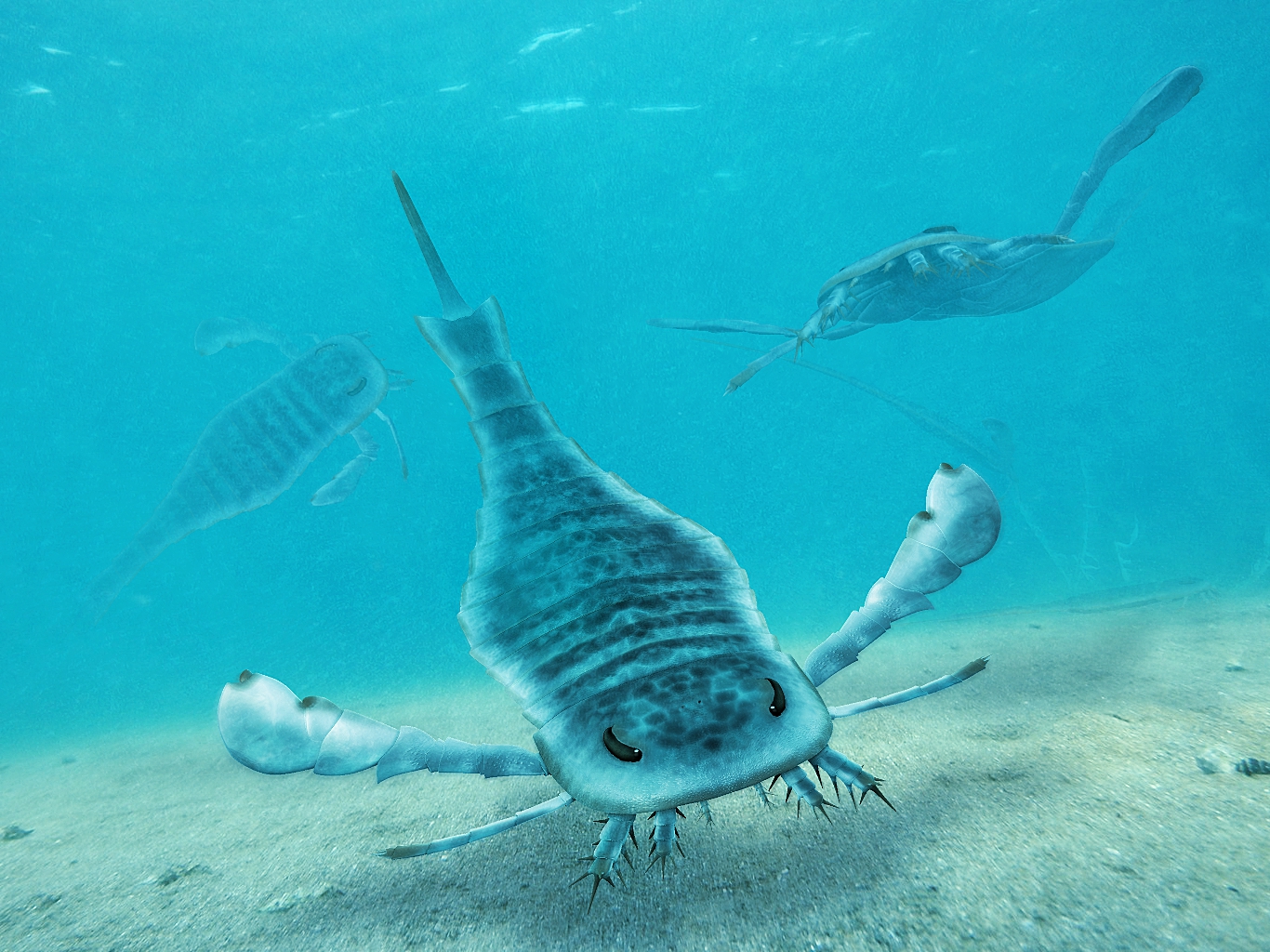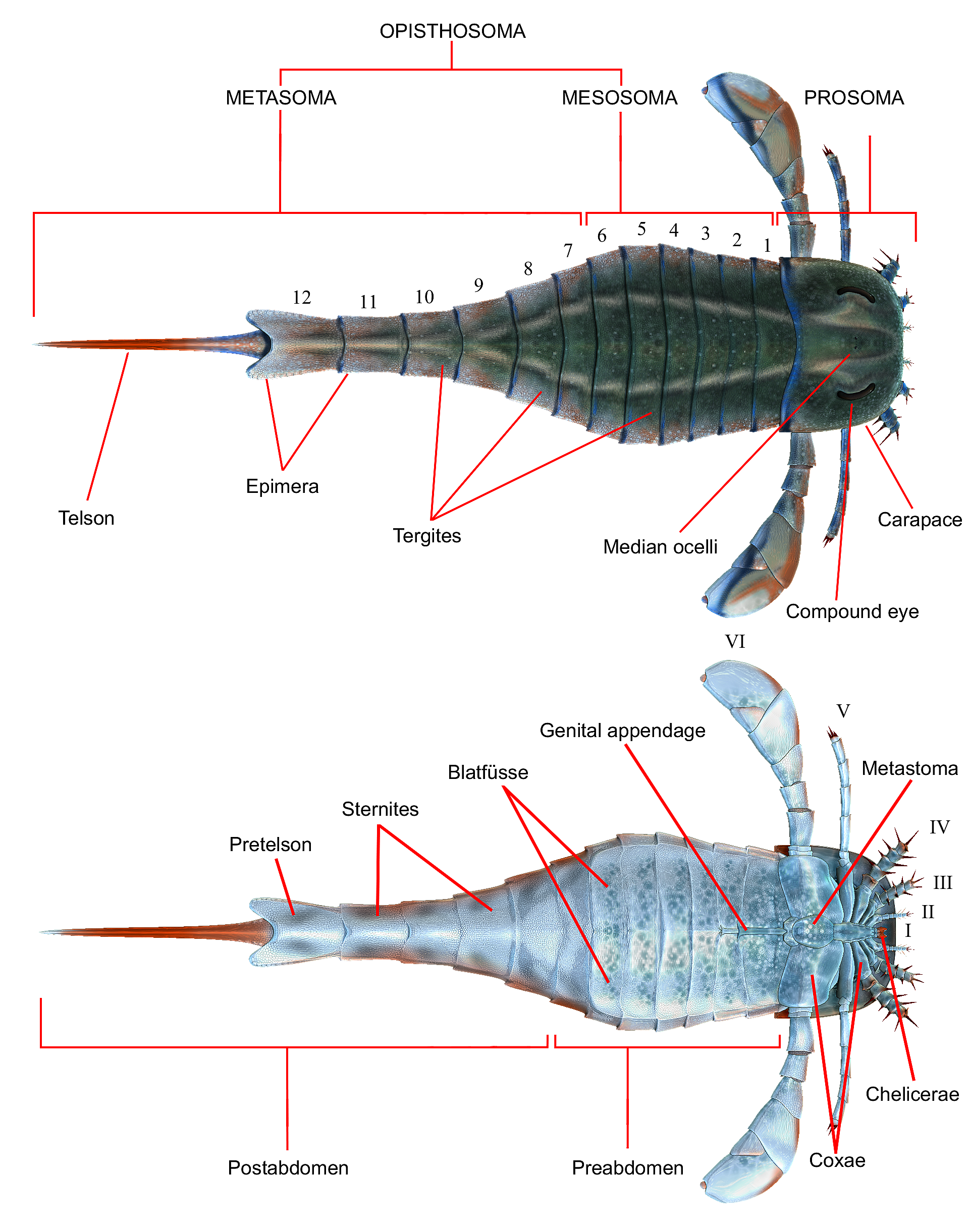|
Bertie Formation
The Bertie Group or Bertie Limestone, also referred to as the Bertie Dolomite and the Bertie Formation, is an Silurian, upper Silurian (Pridoli epoch, Pridoli, or Cayugan) geologic Group (stratigraphy), group and Lagerstätte in southern Ontario, Canada, and western New York State, United States. Details of the type locality and of stratigraphic nomenclature for this unit as used by the U.S. Geological Survey are available on-line at the National Geologic Map Database. The formation comprises dolomite (rock), dolomites, limestones and shales and reaches a thickness of in the subsurface, while in outcrop the group can be thick. The group represents the uppermost unit of the Cayugan Series and the youngest Silurian unit in Ontario. The group overlies the Salina Group and is conformably overlain by the Devonian Bois Blanc Formation in Ontario and Onondaga Limestone in New York. Two formations within the Bertie Group, the Fiddler's Green and Williamsville, are considered Lagerstä ... [...More Info...] [...Related Items...] OR: [Wikipedia] [Google] [Baidu] |
Geological Group
In geology, a group is a lithostratigraphy, lithostratigraphic Stratigraphic unit, unit consisting of a series of related Geological formation, formations that have been classified together to form a group. Formations are the fundamental unit of stratigraphy. Groups may sometimes be combined into Supergroup (geology), supergroups. Groups are useful for showing relationships between formations, and they are also useful for small-scale mapping or for studying the stratigraphy of large regions. Geologists exploring a new area have sometimes defined groups when they believe the strata within the groups can be divided into formations during subsequent investigations of the area. It is possible for only some of the strata making up a group to be divided into formations. An example of a group is the Glen Canyon Group, which includes (in ascending order) the Wingate Sandstone, the Moenave Formation, the Kayenta Formation, and the Navajo Sandstone. Each of the formations can be distingui ... [...More Info...] [...Related Items...] OR: [Wikipedia] [Google] [Baidu] |
Nerepisacanthus
''Nerepisacanthus'' is an extinct genus of acanthodian, probably Acritolepidae, acritolepid, from Middle Silurian (?late Llandovery epoch, Llandovery (Telychian) to Ludlow epoch, Ludlow stages) deposits of New Brunswick, Canada. ''Nerepisacanthus'' is known from many incomplete but articulated specimens. It was collected from the Cunningham Creek Formation, near Nerepis, southern New Brunswick. It was first named by Carole J. Burrow in 2011 in paleontology, 2011 and the type species is ''Nerepisacanthus denisoni''. Additional specimen is known from Bertie Formation, making that species the oldest near-complete acanthodian. References Ischnacanthiformes Silurian cartilaginous fish of North America Paleozoic life of New Brunswick Bertie Formation Fossil taxa described in 2011 {{Acanthodii-stub ... [...More Info...] [...Related Items...] OR: [Wikipedia] [Google] [Baidu] |
Fish
A fish (: fish or fishes) is an aquatic animal, aquatic, Anamniotes, anamniotic, gill-bearing vertebrate animal with swimming fish fin, fins and craniate, a hard skull, but lacking limb (anatomy), limbs with digit (anatomy), digits. Fish can be grouped into the more basal (phylogenetics), basal jawless fish and the more common jawed fish, the latter including all extant taxon, living cartilaginous fish, cartilaginous and bony fish, as well as the extinct placoderms and acanthodians. In a break to the long tradition of grouping all fish into a single Class (biology), class (Pisces), modern phylogenetics views fish as a paraphyletic group. Most fish are ectotherm, cold-blooded, their body temperature varying with the surrounding water, though some large nekton, active swimmers like white shark and tuna can hold a higher core temperature. Many fish can communication in aquatic animals#Acoustic, communicate acoustically with each other, such as during courtship displays. The stud ... [...More Info...] [...Related Items...] OR: [Wikipedia] [Google] [Baidu] |
Rotaciurca
''Rotaciurca'' is an extinct genus of Silurian cephalodiscid pterobranchs. The genus contains a single species, ''Rotaciurca superbus'', known from the Bertie Group of Ontario, Canada. Description ''Rotaciurca'' is a pseudocolonial (containing multiple clustered individuals which are not connected) pterobranch, unique for being a cephalodiscid rather than a graptolite. The cluster consists of a ring of radiating tubes, likely containing the living individuals, attached to a conical structure interpreted as a float, giving the original fossil the nickname of "Ezekiel's wheel". The whole organism is roughly long, seemingly with two distinct rows of tubes. Its pterobranch affinity is confirmed by lineations within the tubes, which are traces of fuselli, and the irregular arrangement of these group it with the cephalodiscids. ''Rotaciurca'' has a number of similarities to '' Yuknessia'', another enigmatic fossil recently described as a pterobranch, including rigid and similarly ... [...More Info...] [...Related Items...] OR: [Wikipedia] [Google] [Baidu] |
Cephalodiscida
Cephalodiscida is one of two orders in the class Pterobranchia, which are small, worm-shaped animals. Members belong to the hemichordata, hemichordates. Species in this order are Sessility (zoology), sessile, living in clear water and secretion, secrete tubes on the ocean floor. Taxonomy The order is a small one, with only two known families, each containing a single extant genus. The validity of the family Atubaridae, who has only a sole member, is regarded as questionable. * Order Cephalodiscida Fowler 1892 ** Family Cephalodiscidae Harmer 1905 *** Genus †''Aellograptus'' Obut 1964 *** Genus †''Eocephalodiscus'' Kozlowski 1938 ex Kozlowski 1949 *** Genus †''Melanostrophus'' Öpik 1930 ex Öpik 1933 *** Genus †''Pterobranchites'' Kozlowski 1967 *** Genus ''Atubaria'' Sato 1936 *** Genus ''Cephalodiscus'' M'Intosh 1882 ** Family †Rotaciurcidae Briggs and Koch 2023 *** Genus †''Rotaciurca'' Briggs and Koch 2023 References Harmer. S. F. 1905. The Pterobranchia ol ... [...More Info...] [...Related Items...] OR: [Wikipedia] [Google] [Baidu] |
Proscorpius
''Proscorpius'' (meaning 'dawn scorpion') is an extinct genus of proscorpiid scorpion that was originally thought to have been a eurypterid. ''Proscorpius'' lived during the Silurian and Devonian periods (about 422.9–416.0 ma). The type and only species, ''Proscorpius osborni'' is an example of one of the earliest scorpions. It was discovered in the Lagerstätte Bertie Formation (Fiddlers Green Member); an epifaunal stratum of New York. The fossil measures roughly 3.8 cm (1.5 inches) in length, however, it is missing part of the tail, so in life the animal would be slightly longer. See also *''Gondwanascorpio ''Gondwanascorpio emzantsiensis'' is an extinct Gondwanan scorpion that lived 360 million years ago in the Devonian. Its fossil remains, clearly showing pincer and sting, were discovered in rocks of the Witteberg Group near Grahamstown in South A ...'' References Prehistoric scorpions Devonian arachnids Paleozoic arthropods of North America Bertie Formatio ... [...More Info...] [...Related Items...] OR: [Wikipedia] [Google] [Baidu] |
Eurypterid
Eurypterids, often informally called sea scorpions, are a group of extinct marine arthropods that form the Order (biology), order Eurypterida. The earliest known eurypterids date to the Darriwilian stage of the Ordovician period, 467.3 Myr, million years ago. The group is likely to have appeared first either during the Early Ordovician or Late Cambrian period. With approximately 250 species, the Eurypterida is the most diverse Paleozoic Chelicerata, chelicerate order. Following their appearance during the Ordovician, eurypterids became major components of marine faunas during the Silurian, from which the majority of eurypterid species have been described. The Silurian genus ''Eurypterus'' accounts for more than 90% of all known eurypterid specimens. Though the group continued to diversify during the subsequent Devonian period, the eurypterids were heavily affected by the Late Devonian extinction event. They declined in numbers and diversity until becoming extinct during the Permi ... [...More Info...] [...Related Items...] OR: [Wikipedia] [Google] [Baidu] |
Onondaga Limestone
The Onondaga Limestone is a group of hard limestones and dolomites of Devonian age that forms geographic features in some areas in which it outcrops; in others, especially its Southern Ontario portion, the formation can be less prominent as a local surface feature. In upstate New York and the Niagara peninsula of southern Ontario the sedimentary rocks tend to dip downward in a generally a South direction. The Onondaga outcrops in a line that usually forms an escarpment (the steep face of a cuesta), because of its resistance to erosion. The outcrop can be traced from the Hudson River valley westward along the southern rim of the Mohawk River valley, passing just south of Syracuse, and along the northern heads of the major Finger Lakes to Buffalo, New York. From Fort Erie, Ontario westward it runs along the north shore of Lake Erie for about 85 km and continues in a west-northwest direction inland for another ~90 km to about Ingersoll and Woodstock, Ontario (as shown in the map on ... [...More Info...] [...Related Items...] OR: [Wikipedia] [Google] [Baidu] |
Outcrop
An outcrop or rocky outcrop is a visible exposure of bedrock or ancient superficial deposits on the surface of the Earth and other terrestrial planets. Features Outcrops do not cover the majority of the Earth's land surface because in most places the bedrock or superficial deposits are covered by soil and vegetation and cannot be seen or examined closely. However, in places where the overlying cover is removed through erosion or tectonic uplift, the rock may be exposed, or ''crop out''. Such exposure will happen most frequently in areas where erosion is rapid and exceeds the weathering rate such as on steep hillsides, mountain ridges and tops, river banks, and tectonically active areas. In Finland, glacial erosion during the last glacial maximum (ca. 11000 BC), followed by scouring by sea waves, followed by isostatic uplift has produced many smooth coastal and littoral outcrops. Bedrock and superficial deposits may also be exposed at the Earth's surface due to human exca ... [...More Info...] [...Related Items...] OR: [Wikipedia] [Google] [Baidu] |
Shale
Shale is a fine-grained, clastic sedimentary rock formed from mud that is a mix of flakes of Clay mineral, clay minerals (hydrous aluminium phyllosilicates, e.g., Kaolinite, kaolin, aluminium, Al2Silicon, Si2Oxygen, O5(hydroxide, OH)4) and tiny fragments (silt-sized particles) of other minerals, especially quartz and calcite.Blatt, Harvey and Robert J. Tracy (1996) ''Petrology: Igneous, Sedimentary and Metamorphic'', 2nd ed., Freeman, pp. 281–292 Shale is characterized by its tendency to split into thin layers (Lamination (geology), laminae) less than one centimeter in thickness. This property is called ''Fissility (geology), fissility''. Shale is the most common sedimentary rock. The term ''shale'' is sometimes applied more broadly, as essentially a synonym for mudrock, rather than in the narrower sense of clay-rich fissile mudrock. Texture Shale typically exhibits varying degrees of fissility. Because of the parallel orientation of clay mineral flakes in shale, it breaks in ... [...More Info...] [...Related Items...] OR: [Wikipedia] [Google] [Baidu] |
Limestone
Limestone is a type of carbonate rock, carbonate sedimentary rock which is the main source of the material Lime (material), lime. It is composed mostly of the minerals calcite and aragonite, which are different Polymorphism (materials science), crystal forms of calcium carbonate . Limestone forms when these minerals Precipitation (chemistry), precipitate out of water containing dissolved calcium. This can take place through both biological and nonbiological processes, though biological processes, such as the accumulation of corals and shells in the sea, have likely been more important for the last 540 million years. Limestone often contains fossils which provide scientists with information on ancient environments and on the evolution of life. About 20% to 25% of sedimentary rock is carbonate rock, and most of this is limestone. The remaining carbonate rock is mostly Dolomite (rock), dolomite, a closely related rock, which contains a high percentage of the mineral Dolomite (mine ... [...More Info...] [...Related Items...] OR: [Wikipedia] [Google] [Baidu] |





